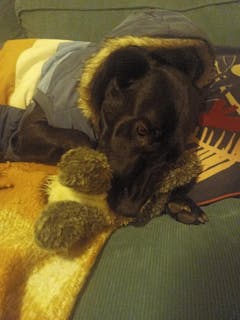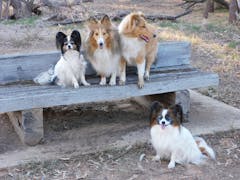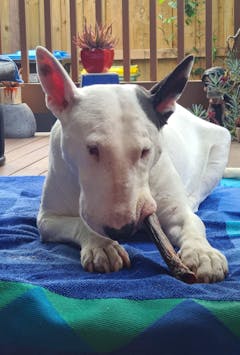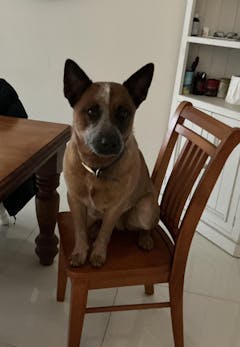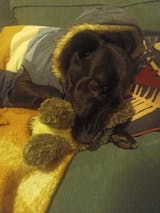Our chicken necks are skinless and have bones, tendons, ligaments and meat. The bone is great for keeping teeth clean especially for cats and smaller dogs that take longer to eat them. The bones also help to maintain a healthy digestive system. Suitable for all dogs of all ages. For cats, select the 'Small' option. The regular sized chicken necks can be small, large or a combination of sizes. A good inside treat – not too messy.
Toughness rating (1 – 3, with 3 being the toughest): 2
Please note that the toughness rating is a comparison of this treat against other treats.
All our chicken is grown in Australia.
As all our treats are 100% natural products, you can expect slight variations from the product pictured.
All our chicken products are La Ionica chicken. This brand of chicken is also processed chemical free.
Poultry builds lean muscle mass in dogs. Chicken is also a great source of essential amino acids.
Chicken tends to make softer treats as it is quite a tender meat. It is also a smaller animal, so the bones are softer than those from larger animals and most dogs will eat the entire treat - bones, claws and all.
Why feed treats with bones/benefits of bones:
Cooked bones pose a risk to a dog’s health as they may splinter into shards which can cause choking and serious damage to the dog’s mouth, throat or intestines. All our treats are dehydrated at low temperatures with high air flow over an extended period. This means that the bones in our treats will break the same as a raw bone rather than splinter like a cooked bone.
Uncooked bones are digestible and are a perfectly natural and important part of your dog’s daily diet.
Excess tartar build-up causes bad breath, cavities, gingivitis, and can lead to expensive teeth scaling and ultimately extractions. When your dog chews on an uncooked bone, it helps to stimulate saliva which contains enzymes. Dog saliva helps prevent canine cavities. The slightly alkaline nature of dog saliva buffers the acids that are produced by some bacteria that are the cause of the enamel of the tooth being eroded away.
Bones are a dog’s natural toothbrush – while being eaten, bones scrape your dog’s teeth helping to keep them clean. Eating the neck and tail bones of larger animals is a great teeth cleaning exercise due to the shape of these bones – while a dog is scraping out the meat between these bones, they are scraping their teeth against the bone. The same effect occurs when they eat through smaller bones like those from poultry and non-weight bearing bones from larger animals.
Uncooked bones can also be a fantastic source of minerals and other nutrients.
Because bones are composed of calcium phosphate, a mineral that aids your dog’s proper growth, an uncooked bone can help a canine’s skeletal system to regenerate and adapt. In fact, the calcium in uncooked bones can be up to four times more digestible than most commonly available calcium supplements.
If your dog exhibits nervous behaviours like self-licking, biting and scratching, an uncooked raw bone can help divert his/her attention away from these destructive behaviours and promote a new, positive chewing habit. Or if your dog likes their food a little too much or needs to be distracted from your mealtime, let him chew on a bone. It helps satisfy your dog’s appetite and will allow you to enjoy your dinner in peace.
Bones also keep your dog’s stomach in good working order. It’s beneficial for his/her digestive tract as it offers a cleansing and scouring effect on his/her system. By providing extra roughage in your dog’s diet, they will be a lot more regular at potty time, and it’ll stimulate anal gland emptying. Completely digestible and perfectly natural, uncooked bones are an important part of their daily diet.
Your dog will love the bone’s yummy taste and the mental stimulation. Plus, all that chewing is a wonderful workout not only for your dog’s jaw muscles but their entire musculoskeletal system. Next time your dog is enjoying a bone, watch how their whole body is engaged in the activity – eating a bone is equivalent to doggie yoga.
In nature, dogs learn from their mothers how to tear and chew their food safely when they are about 3 to 4 weeks old as mothers will start to ween the litter. If puppies did not learn this from their mothers, you can teach your dog how to safely chew bones without gulping them by holding them and encouraging correct chewing. It is always a good idea to monitor your dog at mealtimes.





